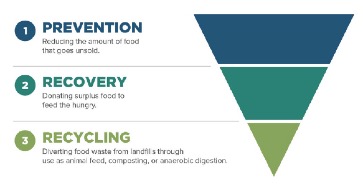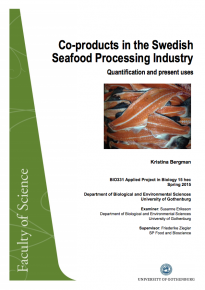Application of Appropriate Technology for Multiple Retailing
Solutions to food loss and waste (FLW) at retail level can be of three types: prevention, recovery or recycling.

For each type of intervention there are technology issues, as well as solutions related to other entry points such as skills and knowledge.
Prevention
Prevention
Strategies used for preventing FLW include:
- Produce specifications
- Enhanced demand forecasting
- Packaging adjustments
- Spoilage prevention packaging
- Standardized date labelling
- Cold chain management
- Consumer education
- Dynamic routing
- Direct to customer delivery
- Reduced handling
- Meal kits
- Secondary resellers
- Dynamic pricing and markdowns
- Improved inventory management
Approaches common to most retailers in a UK mapping study include the following:
- Use of mark downs to sell products close to sell by dates - one retailer commented that mark downs on fish need to be higher than for other food types due to customer concerns about fish not being fresh. Products are also offered to staff at large discount.
- Shelf stacking to maximize shelf life - slanting shelves minimizes high stacking and improves air flow around products.
- Control of stock ordering/forecasting - one respondent commented that fish generally have consistent ordering cycles, as demand is quite stable. Fish sales are not unduly influenced by factors such as weather, which makes accurate forecasting relatively easy.
- Many suppliers to multiple retailers are large seafood processing companies, and in most cases the retailers have established long term relationships with these suppliers. Several retailers commented that they work with suppliers to minimize waste. Mechanisms used included encouraging lean manufacturing and joint initiatives to reduce packaging weights.
- Modifying packaging to enhance shelf life and may include variations in modified atmosphere or use of vacuum packaging. Also reducing occurrence of gas leakages in packaging.
Recovery
Recovery
Recovery of FLW by retailers mainly focuses on:
- Donation storage and handling
- Donation transportation
- Donation liability education
- Donation matching software
- Reverse logistics for recovery
Several respondents in a UK retail mapping study mentioned that they donate waste food to charities. However, this was not generally a major outlet for fish due to the short shelf life of fresh products.
Recycling
Recycling
The recycling rate of unsold food within retail is an estimated 10%, leaving significant untapped potential. The economics of recycling are highly sensitive to local prices of labour, property, disposal fees, compost values, and energy prices. Retailers can adopt a regional approach to identifying and testing recycling opportunities to maximize value. Retailers can pilot new technologies and processes (e.g., de-packaging, compostable packaging, and reverse logistics) to improve the economics of recycling. Recycling options include:
- Animal feed
- Composting
- Anaerobic digestion
- Reverse logistics for recycling
Product that is rejected at supermarket depots or distribution centres is usually taken back by the supplier and may be repackaged and sold through other outlets or donated to charities. However, the short shelf life of fresh fish may limit the effectiveness of these mechanisms.
Key Publications
Retail Food Waste Action Guide This guide is designed to help retail businesses understand their food waste and provide industry-specific guidance on implementing food waste reduction solutions. Its designed for sustainability directors and business function leaders in U.S. retail. | |
Co-products in the Swedish Seafood Processing Industry A study aimed to quantify the amounts and types of seafood co-products generated in the Swedish fish processing industry, and to investigate how to more effectively use them. |
More Resources
More Resources
31 October 2023
09 April 2023













